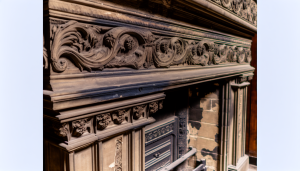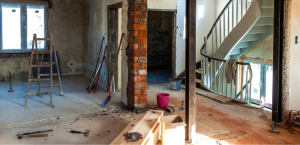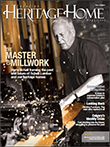Toronto, Ontario — Reviving historical homes to their former glory is not just a renovation project but a tribute to the architectural and cultural heritage they embody. Unlike regular home remodels, heritage home restorations prioritize historical accuracy and authenticity, requiring a delicate balance between modern functionality and preserving the past. Here are essential techniques to maintain historical accuracies in heritage home restorations.
Understanding the Original Architecture
The foundation of any heritage restoration project is a deep understanding of the property’s original architecture, materials, and construction techniques. Research is paramount. Delve into historical records, old photographs, architectural drawings, and even neighboring buildings of the same era to gather a comprehensive view of your home’s original state. Local historical societies can be invaluable resources in this phase, offering insights that go beyond the physical structure to include the period’s landscape and interior design elements.
Employing Traditional Craftsmanship
One of the most striking differences between contemporary and historical homes is the level of craftsmanship. Heritage restorations often require the expertise of artisans skilled in traditional construction techniques. From hand-carved woodwork and ornate plaster moldings to the use of period-appropriate materials like lime plaster or handmade bricks, these craftspeople play a crucial role in preserving the authenticity of a historical home. It’s not just about aesthetic fidelity but ensuring that repairs and restorations are sustainable and compatible with the original building practices.
Sourcing Authentic Materials
Restoring a heritage home often involves a quest for period-accurate materials which can be a challenge in an age where modern, mass-produced building materials are the norm. Whenever possible, preserve and restore the original materials, whether it’s wood flooring, tiles, or hardware. When replacements are necessary, prioritize reclaimed and salvaged materials from the same era or invest in custom replicas that match the original specifications. It’s this attention to detail that helps maintain the historical integrity of the house while ensuring that any additions or replacements do not detract from its original charm.
Integrating Modern Conveniences Discreetly
While historical accuracy is paramount, it’s also important to adapt heritage homes for modern living. The key is to integrate contemporary conveniences in a way that minimizes their impact on the home’s historical character. This can be achieved through creative solutions like using reversible building techniques, concealing modern technology behind period-appropriate facades, or employing systems and fixtures designed to blend with the home’s aesthetic. For example, electrical wiring can be hidden in baseboards, and modern appliances can be encased in cabinetry that echoes the home’s original style.
Collaborating with Preservation Experts
Finally, a successful heritage restoration project often hinges on the guidance and oversight of experts in historical preservation. These specialists can navigate the complexities of restoration work, from securing necessary permits and adhering to local preservation standards to choosing the right conservation methods and materials. Their expertise ensures that every decision, from structural repairs to interior decor, supports the goal of historical accuracy.
In conclusion, reviving a heritage home is a journey back in time, requiring a commitment to authenticity, craftsmanship, and careful research. By employing these techniques, restorers can uphold the historical accuracies that make these properties truly irreplaceable, ensuring they remain a living testament to our architectural and cultural heritage for generations to come.









